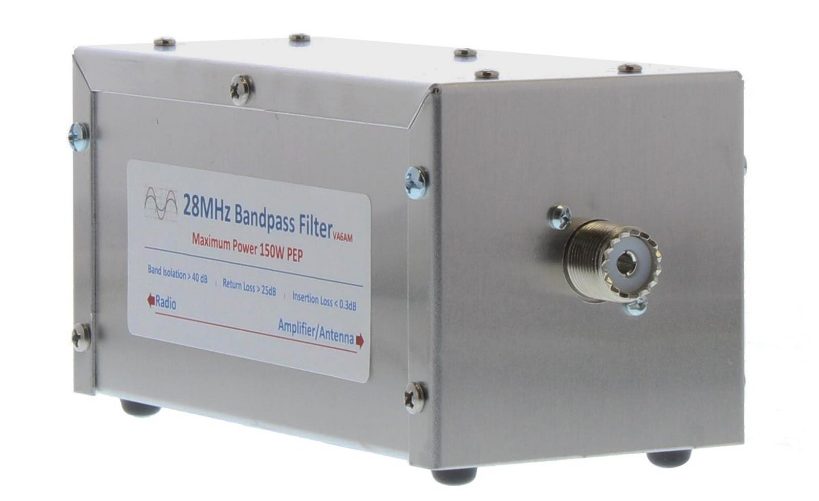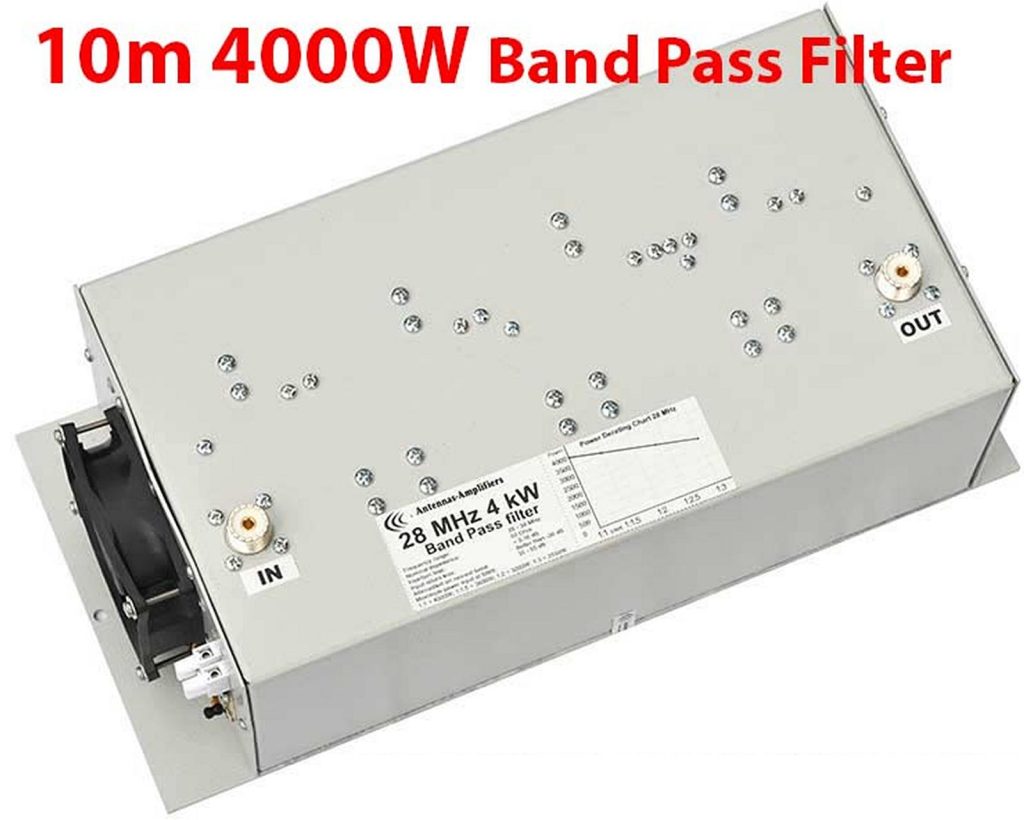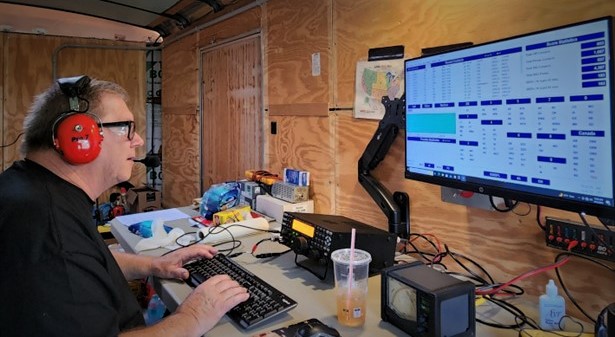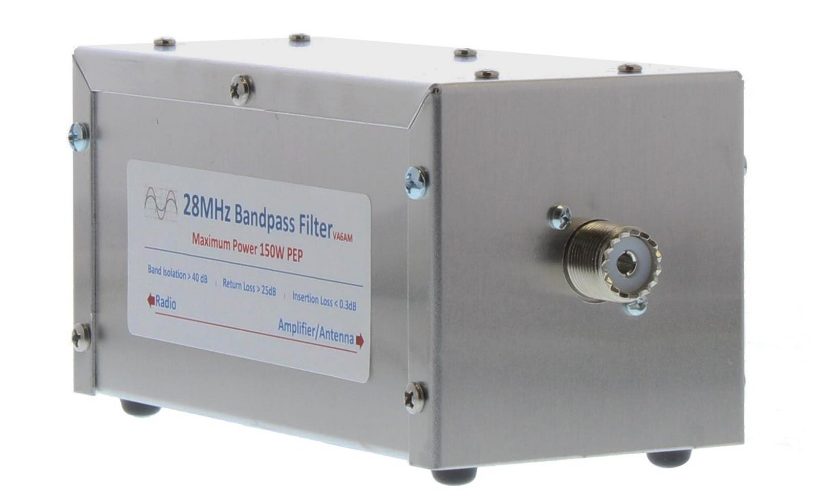Noise can be a serious problem in multi-station environments like Field Day, particularly when it’s of the “wideband” variety. The good news is that there are steps you can take to lessen this annoyance—and there’s plenty of time to prepare before Field Day 2025 (June 28-29) arrives.
If the video below represents you from Field Day’s past, it’s time to explore your options for better results this year:
Before we dive into some of the available gear for mitigating inter-station interference issues, we highly recommend that you read this OnAllBands article from Ward Silver, N0AX: “Noise Management on Field Day.” It’s filled with great advice about nipping problems in the bud before hauling your equipment onto your temporary operating site, including testing transmitters for noise issues before the big weekend. He notes that the most common noise trouble encountered on Field Day is wideband noise from a transmitter.
“Wideband noise that occupies an entire band or several bands is the biggest problem for multi-station Field Day setups,” he wrote. Other QRM gremlins include harmonics produced by the transmitter and intermodulation from the transmitter or amplifier.
Band Pass Filters
If pre-event testing reveals your radio has a problem, the noise needs to be filtered at the transmitter. This can be accomplished with band pass filters. DX Engineering carries band pass filters from several highly regarded providers, including VA6AM Engineering.
Filters from Pavel, VA6AM, are multi-stage inline passive electronic devices designed to specifically limit the transmitting and receiving RF passband to a single amateur band. They dramatically lower the noise floor for enhanced single-band weak signal reception perfect for DXing, contesting, and Field Day operations. Used individually on monoband radio and antenna combinations, these filters provide the isolation required to eliminate image and harmonic RF interference issues for dedicated monoband operations in multi-radio environments.
Built into durable aluminum enclosures and supplied with SO-239 connectors, these filters boast 60 dB of out-of-band suppression, typical insertion loss of less than 0.25 dB, and return loss of less than 26 dB, equivalent to SWR under 1.1:1.
The filters allow multiple transceivers to be operated on different bands simultaneously on the same antenna with use of a VA6AM HF multiplexer (diplexer: 80/40M; triplexers: 20/15/10M, 80/40/20M, or 160/80/40M). In addition, the VA6AM Split Diplexer covers 20/15/10M and 160/80/40M.
VA6AM 150W PEP band bass filters are available for 160, 80, 40, 20, 15, and 10 meters.

Five Stars (VA6AM 40M Band Pass Filter): “I also have a triplexer and 10/15/20 low-power filter set. I needed this 40M version to round out the set. These things just work, and they work to specifications. Nicely built.”
Ronald – DX Engineering Customer
***
Five Stars (VA6AM 40M Band Pass Filter): “Bought for our club’s Field Day, POTA and other get-togethers where more than one transmitter is being used. Absolutely required if multiple rigs and frequencies are used in a tight area.”
Benjamin – DX Engineering Customer
***
Also visit DXEngineering.com for monoband (160-10M, including WARC bands and 60M) band pass filters from Antennas-Amplifiers.
Designed for both reception and transmission, the filters boast a low insertion loss and are designed to significantly suppress out-of-band interference. They are enclosed in a robust powdercoated aluminum enclosure and come equipped with silver-plated SO-239 connectors, ensuring minimal SWR and high attenuation of out-of-band signals.

Also available is an Antennas-Amplifiers 100W 2M transmit/receive band pass filter. Look for more 2M, 70cm (single- and dual-band versions) and 6 meter filters coming to DX Engineering.
Visit DX Engineering for other band pass filter options: 4O3A XL Series High-Power Band Pass Filters (4,500W 160-6M, including WARC bands) and 160/80/40/20/15/10M 200W PEP band pass filters from RF Meca.
Get a Handle on Your Field Day RF
We also encourage you to take a moment to read N0AX’s article, “RF Management in the Field,” which covers these topics:
- What is RF?
- Where is the RF?
- RF and Equipment Table—Bonding
- RF and the Station Wiring, including use of ferrite snap-on beads available in kits at DX Engineering
- RF on the Antenna System, including use of common-mode chokes where the feedline attaches to station equipment

Better Transceiver, Better Results
In his OnAllBands article, “Minimizing Interference on Field Day,” Mark Haverstock, K8MSH, points out that “to manage interference on Field Day with operations on the same band, transmitter purity and low composite transmit noise need to be minimized. Using transceivers that generate a minimum of transmitter phase noise is very important. Transmitters with high phase noise generate broadband noise across large sections of the spectrum that are difficult to be filtered out by nearby receivers.” Further, he notes that the receiver must be able to tolerate very high “out-of-band” RF levels. Look for receivers with high receiver dynamic range and reciprocal mixing dynamic range (RMDR). Among other good choices, Rob Sherwood Receiver Test Data ranks the Yaesu FTdx-101D/MP, FTdx10, Icom IC-R8600 Receiver, and Yaesu FT-710 high in both categories.

Be sure to check out these other Field Day-related articles from OnAllBands:
- “RF Safety in the Field”
- “Grounding and Bonding for Portable Amateur Stations”
- “Choosing a Battery System for Portable Operations”
- “What Transceivers Did You Use During Field Day 2024?”
Next week at OnAllBands we’ll be turning our attention to easy-to-deploy antenna choices for Field Day.
The post Field Day Gear Part 3: Band Pass Filters, Ferrite & Transceivers appeared first on OnAllBands.

